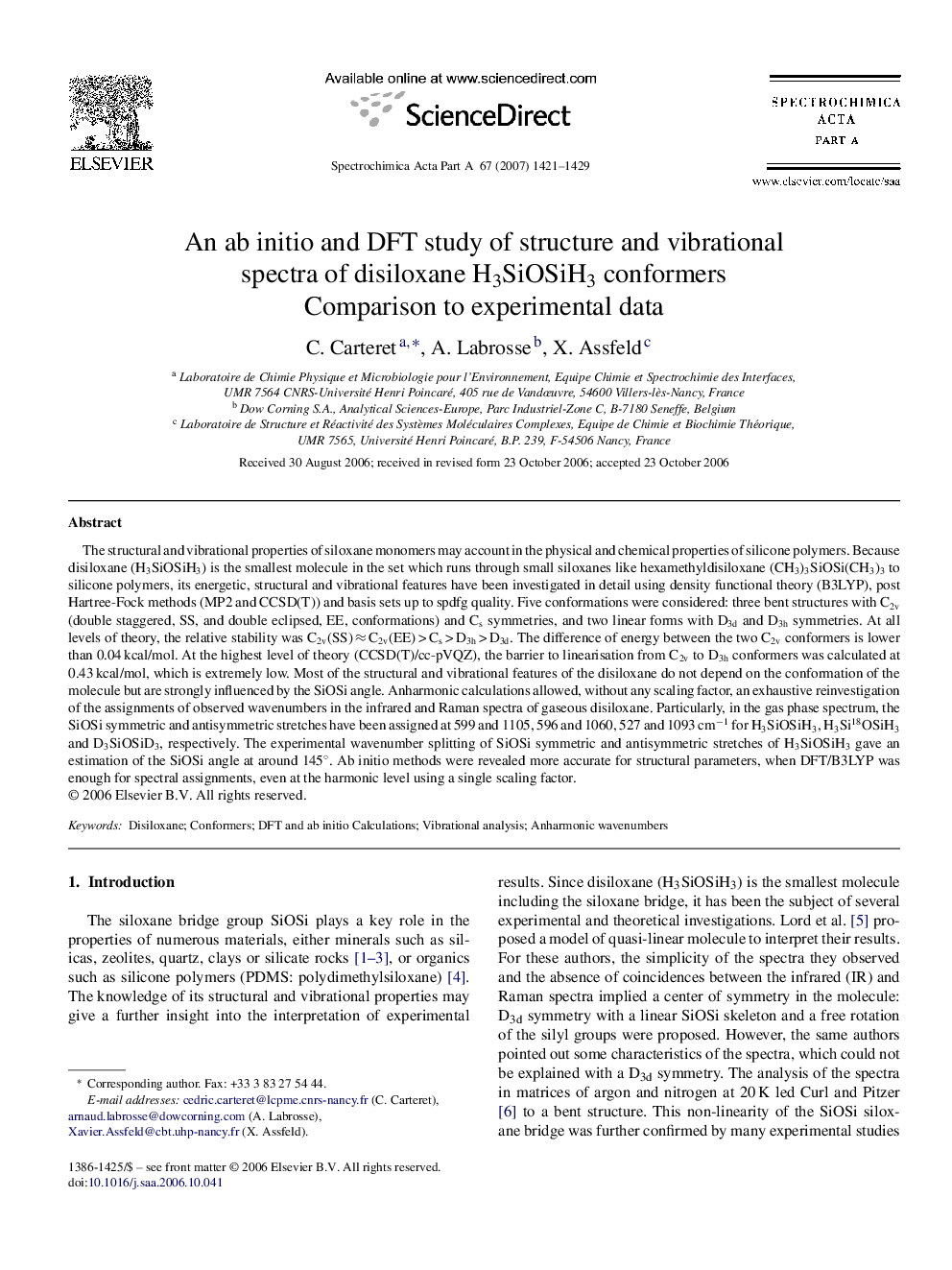| Article ID | Journal | Published Year | Pages | File Type |
|---|---|---|---|---|
| 1235124 | Spectrochimica Acta Part A: Molecular and Biomolecular Spectroscopy | 2007 | 9 Pages |
Abstract
The structural and vibrational properties of siloxane monomers may account in the physical and chemical properties of silicone polymers. Because disiloxane (H3SiOSiH3) is the smallest molecule in the set which runs through small siloxanes like hexamethyldisiloxane (CH3)3SiOSi(CH3)3 to silicone polymers, its energetic, structural and vibrational features have been investigated in detail using density functional theory (B3LYP), post Hartree-Fock methods (MP2 and CCSD(T)) and basis sets up to spdfg quality. Five conformations were considered: three bent structures with C2v (double staggered, SS, and double eclipsed, EE, conformations) and Cs symmetries, and two linear forms with D3d and D3h symmetries. At all levels of theory, the relative stability was C2v(SS) â C2v(EE) > Cs > D3h > D3d. The difference of energy between the two C2v conformers is lower than 0.04 kcal/mol. At the highest level of theory (CCSD(T)/cc-pVQZ), the barrier to linearisation from C2v to D3h conformers was calculated at 0.43 kcal/mol, which is extremely low. Most of the structural and vibrational features of the disiloxane do not depend on the conformation of the molecule but are strongly influenced by the SiOSi angle. Anharmonic calculations allowed, without any scaling factor, an exhaustive reinvestigation of the assignments of observed wavenumbers in the infrared and Raman spectra of gaseous disiloxane. Particularly, in the gas phase spectrum, the SiOSi symmetric and antisymmetric stretches have been assigned at 599 and 1105, 596 and 1060, 527 and 1093 cmâ1 for H3SiOSiH3, H3Si18OSiH3 and D3SiOSiD3, respectively. The experimental wavenumber splitting of SiOSi symmetric and antisymmetric stretches of H3SiOSiH3 gave an estimation of the SiOSi angle at around 145°. Ab initio methods were revealed more accurate for structural parameters, when DFT/B3LYP was enough for spectral assignments, even at the harmonic level using a single scaling factor.
Related Topics
Physical Sciences and Engineering
Chemistry
Analytical Chemistry
Authors
C. Carteret, A. Labrosse, X. Assfeld,
